Effect of Powder Particle Size and Shape on Appearance and Performance of Titanium Coatings Prepared on Mild Steel by Plasma Cladding
Abstract
:1. Introduction
2. Materials and Methods
2.1. Materials and Coating Preparation
2.2. Test and Characterization
3. Results and Discussion
3.1. Appearance and Composition
3.2. Mechanical and Corrosion Performance
4. Conclusions
- (1)
- The flowability will affect the coating quality. The powder with moderate particle size and good sphericity can obtain a dense Ti coating. The coating obtained by spherical powder cladding is relatively flat and does not appear macroscopic cracks, and has good formability. In contrast, the coating with irregular shape powder cladding has poor formability and more cracks on the surface. Among the coatings prepared in this work, the Ti coatings prepared with 75–150 μm spherical titanium powder as the cladding material have better comprehensive service performance.
- (2)
- The interface between the coating and the substrate prepared by Ti powders with different particle sizes and shapes showed metallurgical bonding, and Fe diffused in the Ti coating during the cladding process. The surface phases of Ti coatings prepared by spherical powders are dominated by α-Ti and Fe0.2Ti0.8, while the surface phases of Ti coatings prepared by irregular shape powders are dominated by FeTi and Ti2Fe.
- (3)
- The Ti-Fe intermetallic compounds have an effect on the service performance of Ti coatings. The prepared Ti coatings show good mechanical properties. The coating prepared from 75–150 μm spherical powders has higher mechanical properties, and its shear strengths can reach 105.18 MPa and tensile strengths exceed 45.11 MPa. Affected by the diffusion of Fe, the average hardness values of the coatings are all greater than 250 HV. The corrosion resistance of the prepared Ti coatings is greatly improved than that of traditional mild steel. The coatings prepared from spherical powders have similar corrosion resistance and are close to pure titanium. The coatings prepared from 75–150 μm spherical titanium powder have the highest Ecorr of −0.2206 V and the smallest Icorr of 6.220 × 10−8 A/cm2. Due to the formation of more Fe-Ti intermetallic compounds, the coatings prepared from irregular powders have more defects and poor relative corrosion resistance.
Author Contributions
Funding
Institutional Review Board Statement
Informed Consent Statement
Data Availability Statement
Conflicts of Interest
References
- Yan, J.-B.; Liew, J.R.; Zhang, M.-H.; Wang, J.-Y. Mechanical properties of normal strength mild steel and high strength steel S690 in low temperature relevant to Arctic environment. Mater. Des. 2014, 61, 150–159. [Google Scholar] [CrossRef]
- Yang, H.-Q.; Zhang, Q.; Li, Y.-M.; Liu, G.; Huang, Y. Effects of mechanical stress and cathodic protection on the performance of a marine organic coating on mild steel. Mater. Chem. Phys. 2021, 261, 124233. [Google Scholar] [CrossRef]
- Paul, S.; Mondal, R. Prediction and Computation of corrosion rates of A36 mild steel in oilfield seawater. J. Mater. Eng. Perform. 2018, 27, 3174–3183. [Google Scholar] [CrossRef]
- Gorynin, I. Titanium alloys for marine application. Mater. Sci. Eng. A 1999, 263, 112–116. [Google Scholar] [CrossRef]
- Gorynin, I.V.; Oryshchenko, A.S.; Leonov, V.P.; Mikhailov, V.I.; Schastlivaia, I.A. Titanium Application in Marine Engineering and Nuclear-Power Engineering. In Proceedings of the 13th World Conference on Titanium, San Diego, CA, USA, 16–20 August 2015; Wiley Online Library: Hoboken, NJ, USA, 2016; pp. 1797–1805. [Google Scholar]
- Li, W.; Cao, C.; Yin, S. Solid-state cold spraying of Ti and its alloys: A literature review. Prog. Mater. Sci. 2020, 110, 100633. [Google Scholar] [CrossRef]
- Wu, C.S.; Wang, L.; Ren, W.J.; Zhang, X.Y. Plasma arc welding: Process, sensing, control and modeling. J. Manuf. Processes 2014, 16, 74–85. [Google Scholar] [CrossRef]
- Buytoz, S.; Orhan, A.; Gur, A.K.; Caligulu, U. Microstructural Development of Fe–Cr–C and B4C powder alloy coating on stainless steel by plasma-transferred arc weld surfacing. Arab. J. Sci. Eng. 2013, 38, 2197–2204. [Google Scholar] [CrossRef]
- Deuis, R.; Yellup, J.; Subramanian, C. Metal-matrix composite coatings by PTA surfacing. Compos. Sci. Technol. 1998, 58, 299–309. [Google Scholar] [CrossRef]
- Ravichandran, M.; Sabarirajan, N.; Sathish, T.; Saravanan, S. Effect of welding parameters on mechanical properties of plasma transferred arc welded SS 202 plates. Appl. Mech. Mater. 2016, 852, 324–330. [Google Scholar] [CrossRef]
- DebRoy, T.; Wei, H.L.; Zuback, J.S.; Mukherjee, T.; Elmer, J.W.; Milewski, J.O.; Beese, A.M.; Wilson-Heid, A.; De, A.; Zhang, W. Additive manufacturing of metallic components—Process, structure and properties. Prog. Mater. Sci. 2018, 92, 112–224. [Google Scholar] [CrossRef]
- Karlsson, J.; Snis, A.; Engqvist, H.; Lausmaa, J. Characterization and comparison of materials produced by Electron Beam Melting (EBM) of two different Ti–6Al–4V powder fractions. J. Mater. Processing Technol. 2013, 213, 2109–2118. [Google Scholar] [CrossRef]
- Dvorský, D.; Kubásek, J.; Roudnická, M.; Průša, F.; Nečas, D.; Minárik, P.; Stráská, J.; Vojtěch, D. The effect of powder size on the mechanical and corrosion properties and the ignition temperature of WE43 alloy prepared by spark plasma sintering. J. Magnes. Alloy. 2021, 9, 1349–1362. [Google Scholar] [CrossRef]
- Vaz, R.F.; Silvello, A.; Sanchez, J.; Albaladejo, V.; Cano, I.G. The Influence of the Powder Characteristics on 316L Stainless Steel Coatings Sprayed by Cold Gas Spray. Coatings 2021, 11, 168. [Google Scholar] [CrossRef]
- Buchely, M.F.; Gutierrez, J.C.; León, L.M.; Toro, A. The effect of microstructure on abrasive wear of hardfacing alloys. Wear 2005, 259, 52–61. [Google Scholar] [CrossRef]
- Cherepanov, A.; Mali, V.; Maliutina, I.N.; Orishich, A.; Malikov, A.; Drozdov, V. Laser welding of stainless steel to titanium using explosively welded composite inserts. Int. J. Adv. Manuf. Technol. 2017, 90, 3037–3043. [Google Scholar] [CrossRef]
- Zhang, Y.; Sun, D.; Gu, X.; Li, H. Strength improvement and interface characteristic of direct laser welded Ti alloy/stainless steel joint. Mater. Lett. 2018, 231, 31–34. [Google Scholar] [CrossRef]
- Chen, H.-C.; Bi, G.; Lee, B.Y.; Cheng, C.K. Laser welding of CP Ti to stainless steel with different temporal pulse shapes. J. Mater. Processing Technol. 2016, 231, 58–65. [Google Scholar] [CrossRef]
- Song, T.; Jiang, X.; Shao, Z.; Fang, Y.; Mo, D.; Zhu, D.; Zhu, M. Microstructure and mechanical properties of vacuum diffusion bonded joints between Ti-6Al-4V titanium alloy and AISI316L stainless steel using Cu/Nb multi-interlayer. Vacuum 2017, 145, 68–76. [Google Scholar] [CrossRef]
- Liu, D.; Liang, G.; Hao, X.; Huang, Y.; Li, G.; Lv, Z.; Lv, M.; Al-Nehari, M.; Tochukwu, O.P. Microstructure and properties of WC/diamond/Co-based gradient composite coatings on high-speed steel fabricated by laser cladding. Int. J. Adv. Manuf. Technol. 2021, 117, 3137–3151. [Google Scholar] [CrossRef]
- Wang, X.; Laoui, T.; Bonse, J.; Kruth, J.; Lauwers, B.; Froyen, L. Direct selective laser sintering of hard metal powders: Ex-perimental study and simulation. Int. J. Adv. Manuf. Technol. 2002, 19, 351–357. [Google Scholar] [CrossRef]
- Zhang, Y.; Sun, D.; Gu, X.; Li, H. A hybrid joint based on two kinds of bonding mechanisms for Titanium alloy and stainless steel by pulsed laser welding. Mater. Lett. 2016, 185, 152–155. [Google Scholar] [CrossRef]
- Wang, T.; Zhang, B.; Feng, J.; Tang, Q. Effect of a copper filler metal on the microstructure and mechanical properties of electron beam welded titanium–stainless steel joint. Mater. Charact. 2012, 73, 104–113. [Google Scholar] [CrossRef]
- Chen, S.; Zhang, M.; Huang, J.; Cui, C.; Zhang, H.; Zhao, X. Microstructures and mechanical property of laser butt welding of titanium alloy to stainless steel. Mater. Des. 2014, 53, 504–511. [Google Scholar] [CrossRef]
- Ichikawa, Y.; Tokoro, R.; Tanno, M.; Ogawa, K. Elucidation of cold-spray deposition mechanism by auger electron spectroscopic evaluation of bonding interface oxide film. Acta Mater. 2019, 164, 39–49. [Google Scholar] [CrossRef]
- Fukanuma, H.; Ohno, N.; Sun, B.; Huang, R. In-flight particle velocity measurements with DPV-2000 in cold spray. Surf. Coat. Technol. 2006, 201, 1935–1941. [Google Scholar] [CrossRef]
- Takeuchi, A.; Inoue, A. Classification of bulk metallic glasses by atomic size difference, heat of mixing and period of constituent elements and its application to characterization of the main alloying element. Mater. Trans. 2005, 46, 2817–2829. [Google Scholar] [CrossRef] [Green Version]
- Leger, P.E.; Sennour, M.; Delloro, F.; Borit, F.; Debray, A.; Gaslain, F.; Jeandin, M.; Ducos, M. Multiscale experimental and numerical approach to the powder particle shape effect on Al-Al2O3 coating build-up. J. Therm. Spray Technol. 2017, 26, 1445–1460. [Google Scholar] [CrossRef]
- Yuan, W.; Li, R.; Chen, Z.; Gu, J.; Tian, Y. A comparative study on microstructure and properties of traditional laser cladding and high-speed laser cladding of Ni45 alloy coatings. Surf. Coat. Technol. 2021, 405, 126582. [Google Scholar] [CrossRef]
- Gao, X.; Abreu Faria, G.; Zhang, W.; Wheeler, K.R. Numerical analysis of non-spherical particle effect on molten pool dynamics in laser-powder bed fusion additive manufacturing. Comput. Mater. Sci. 2020, 179, 109648. [Google Scholar] [CrossRef]
- Schmidt, T.; Gaertner, F.; Kreye, H. New developments in cold spray based on higher gas and particle temperatures. J. Therm. Spray Technol. 2006, 15, 488–494. [Google Scholar] [CrossRef]
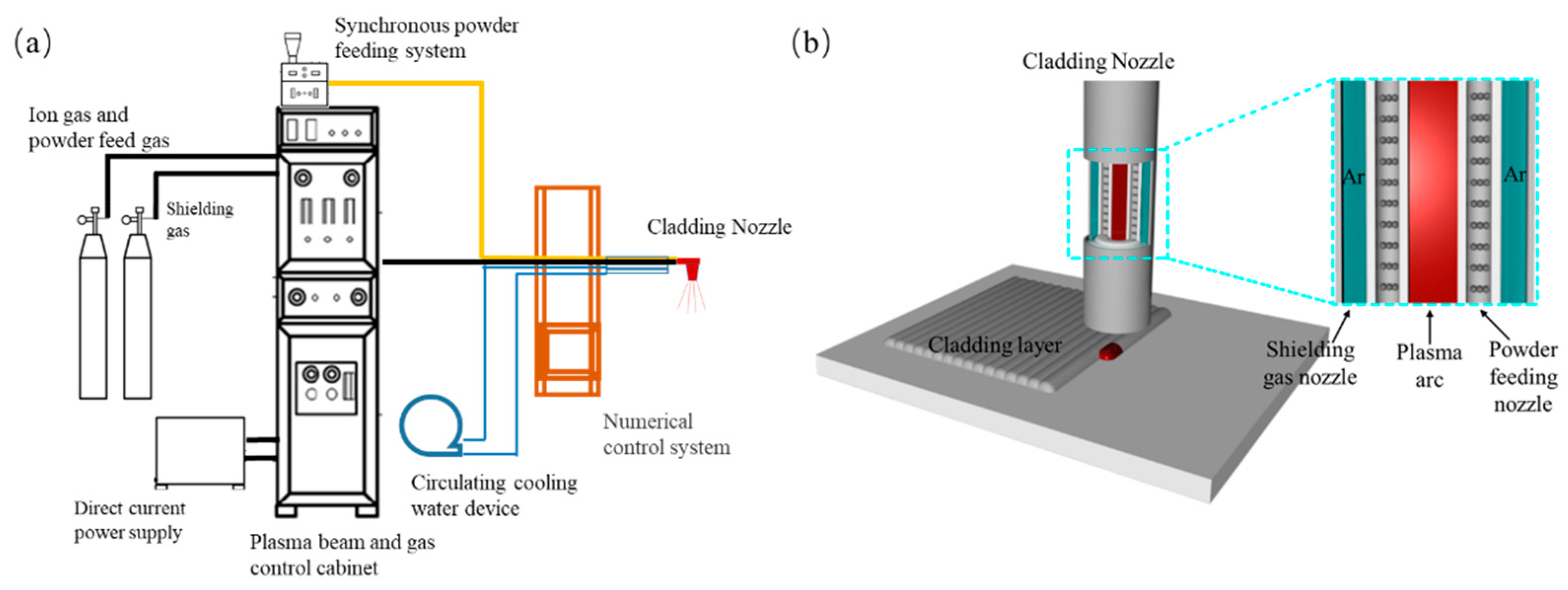
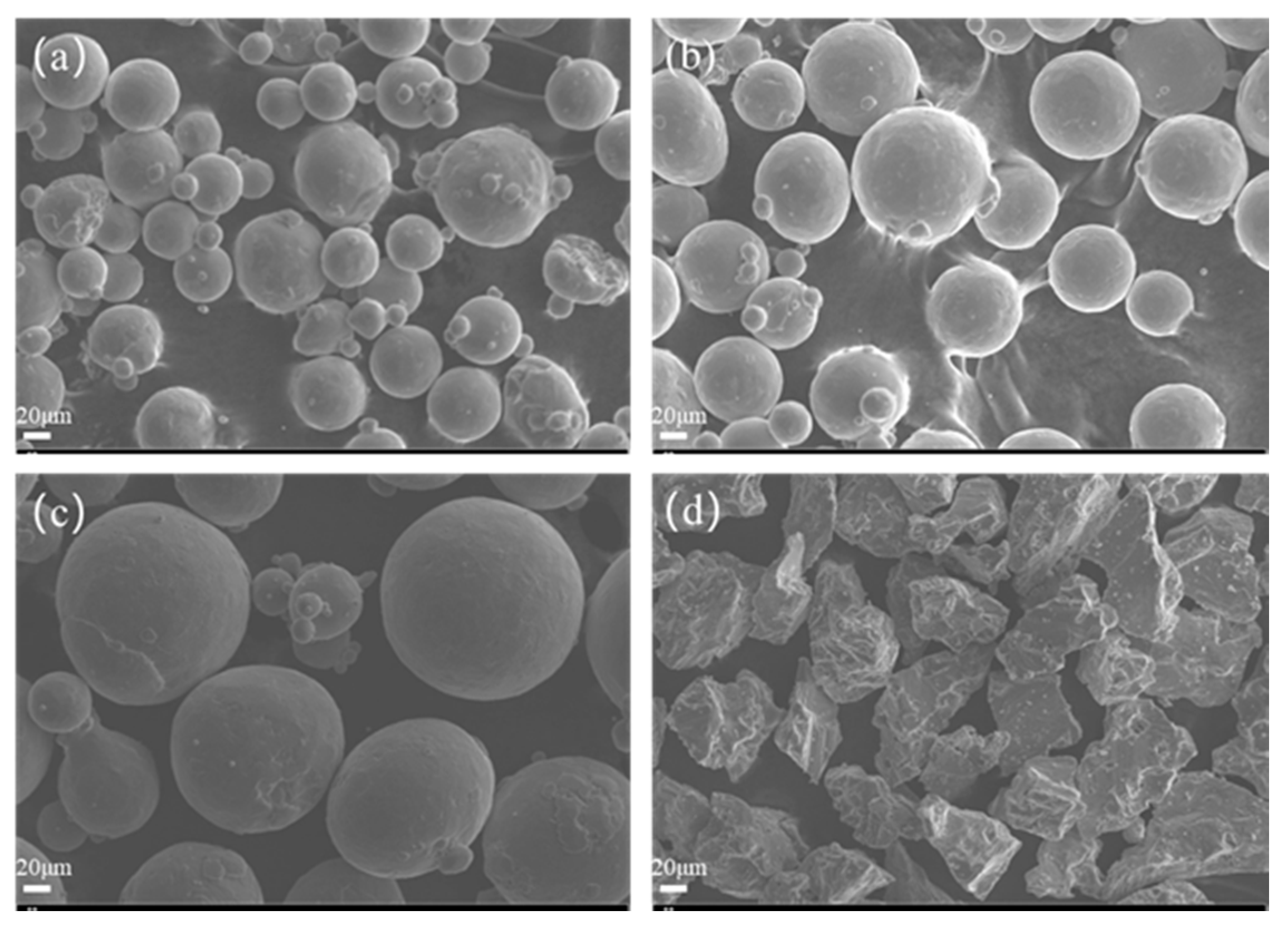

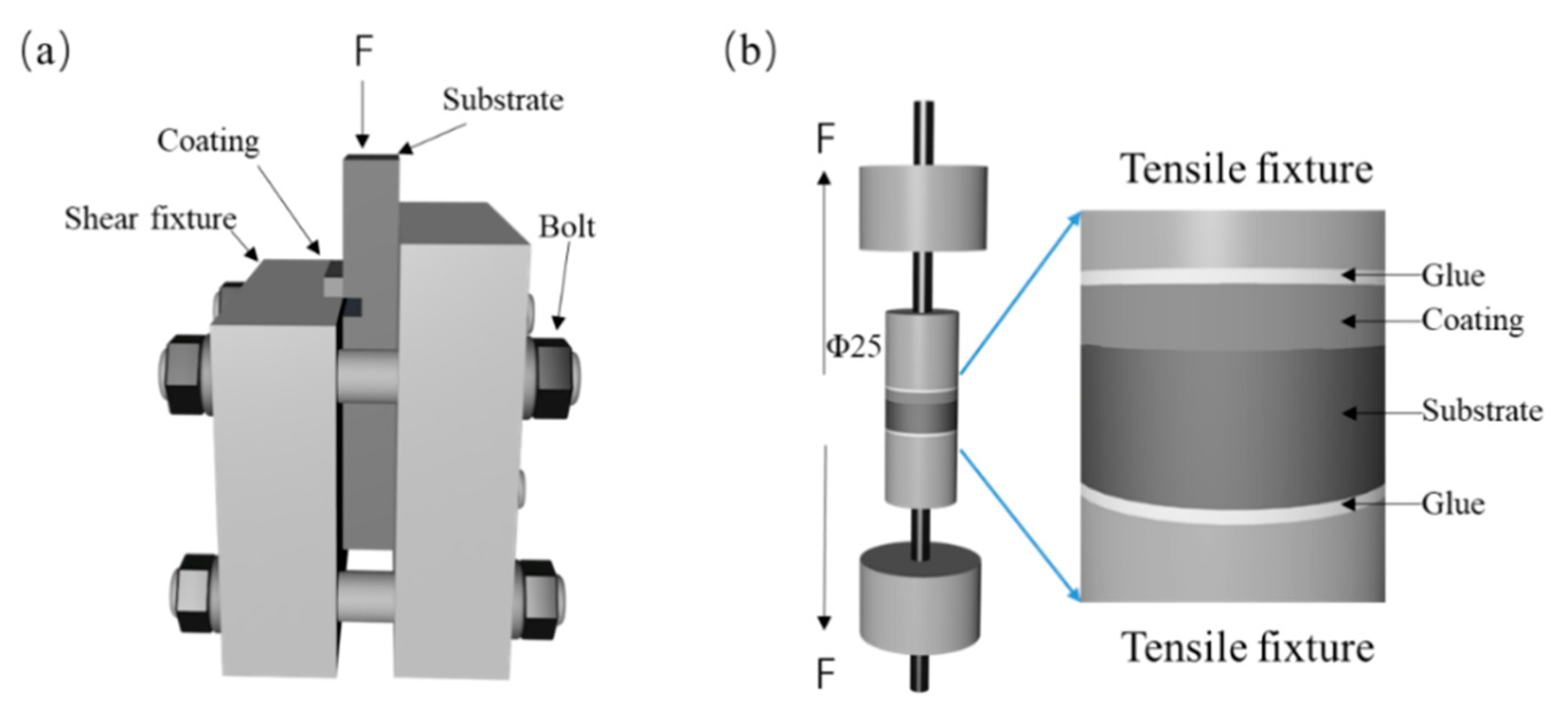
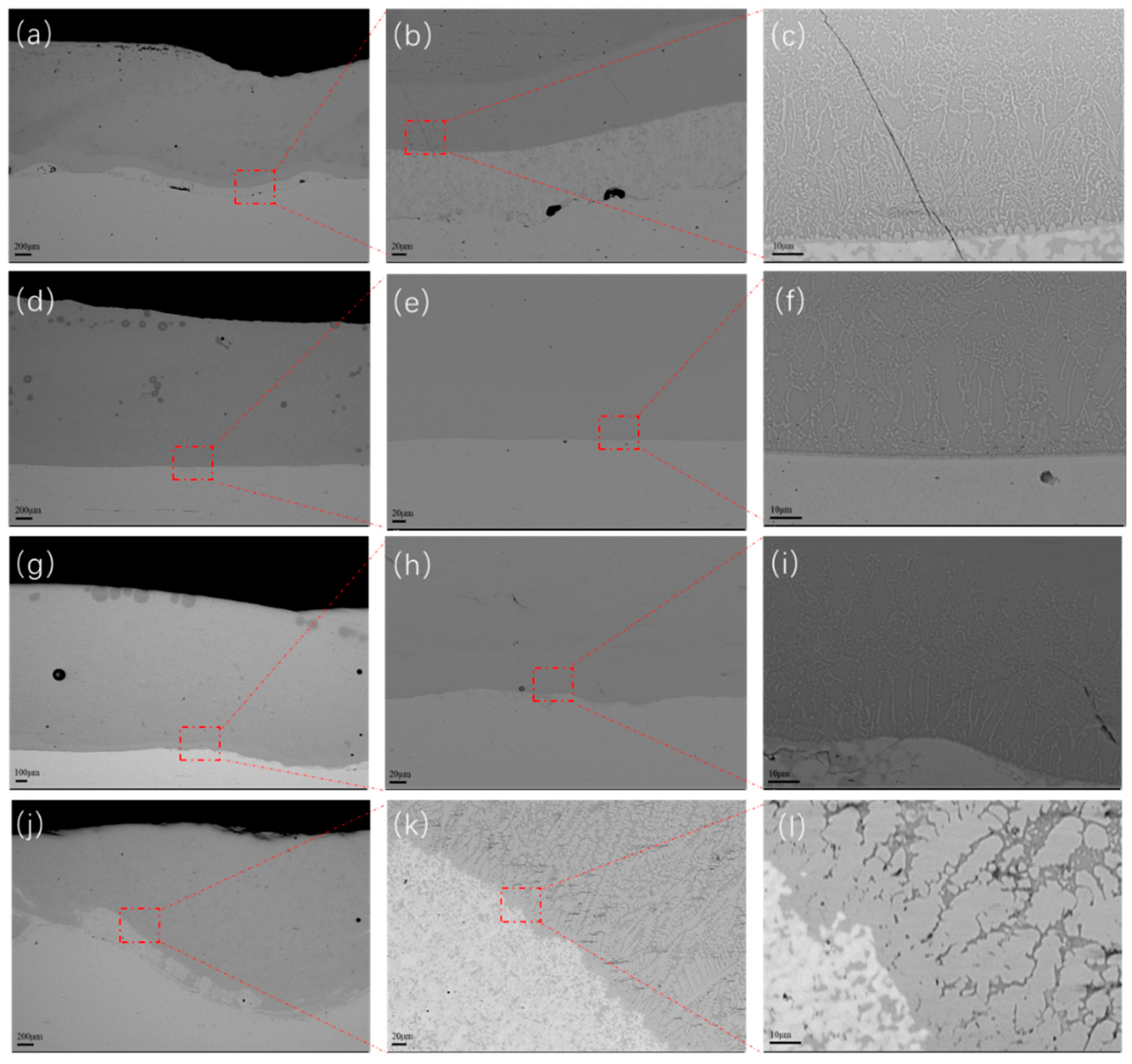


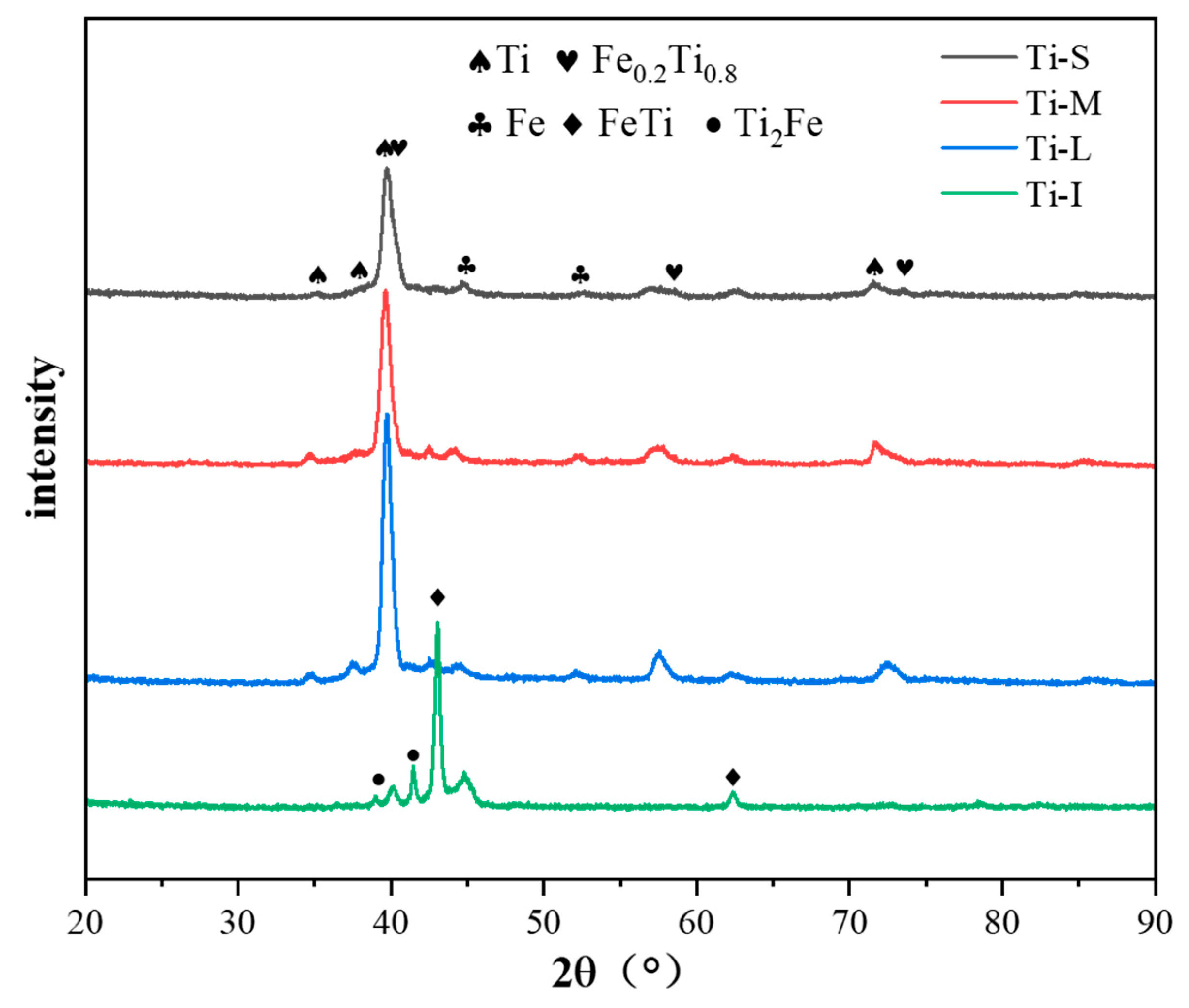
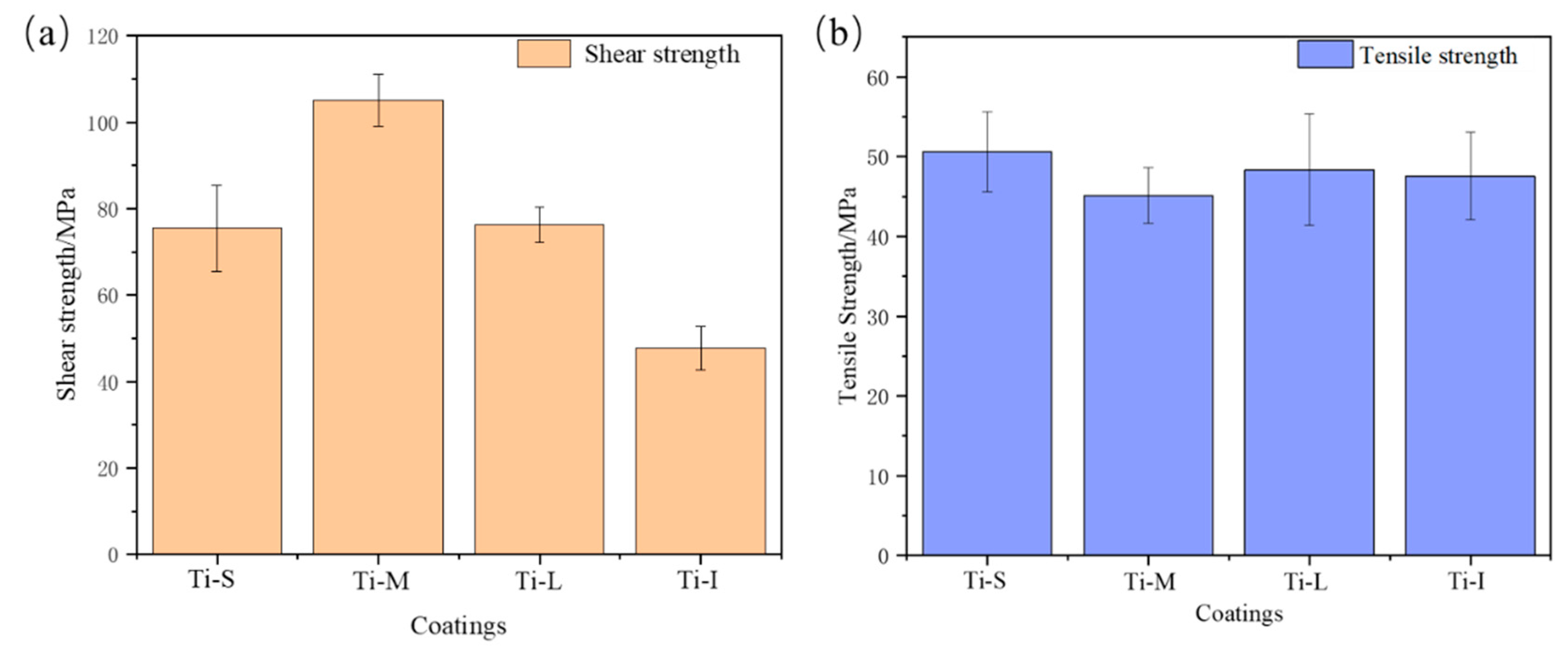
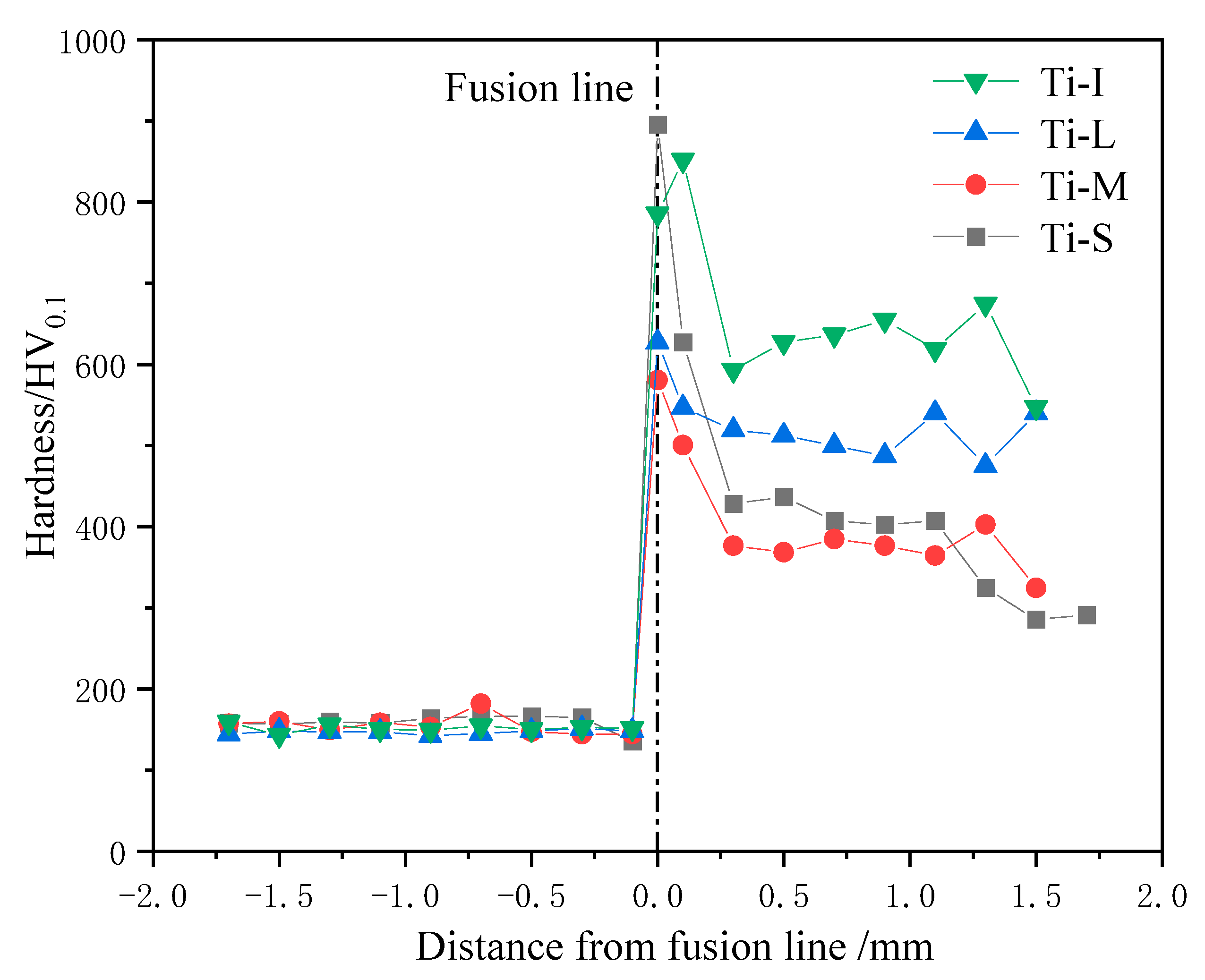
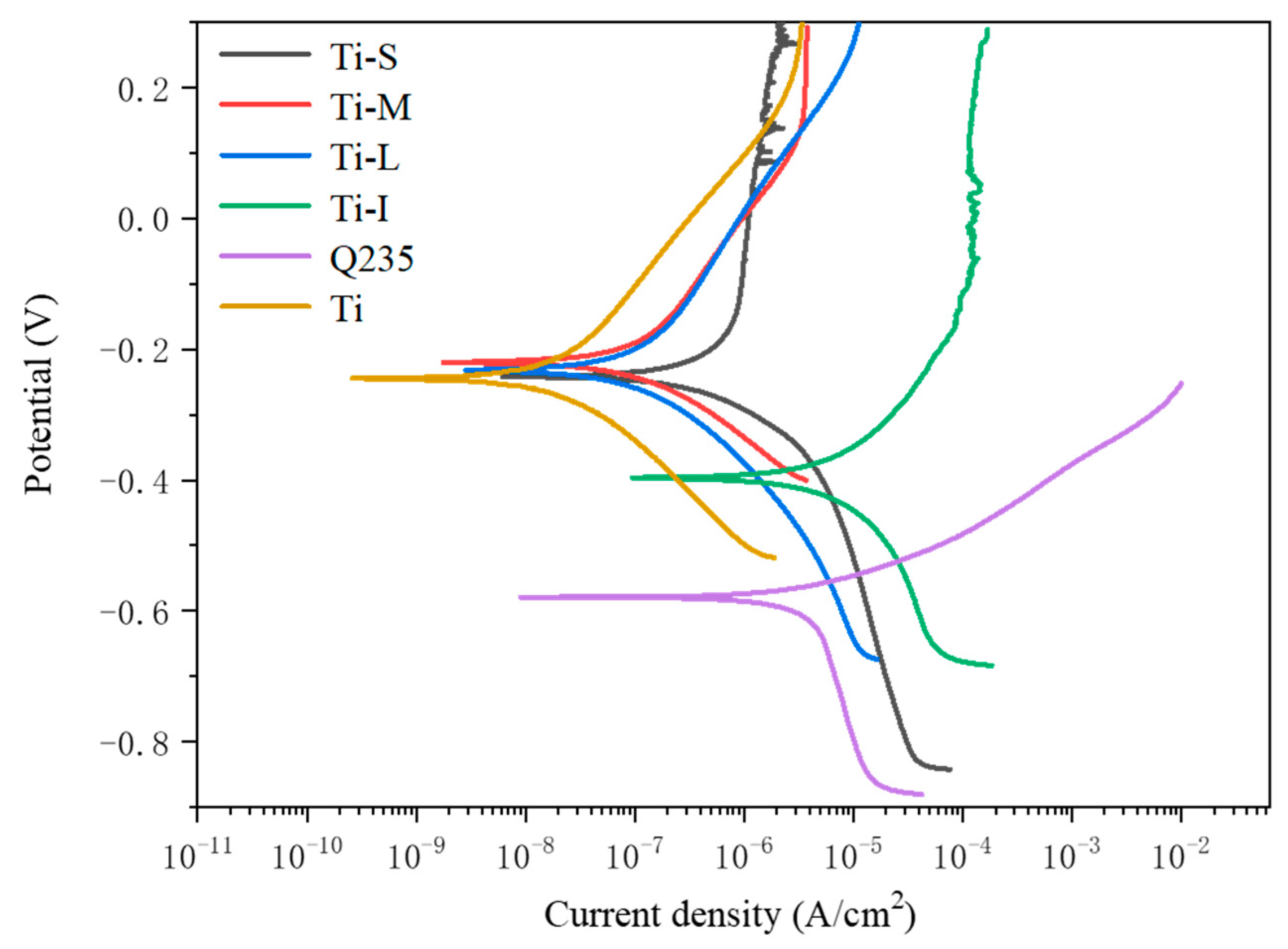
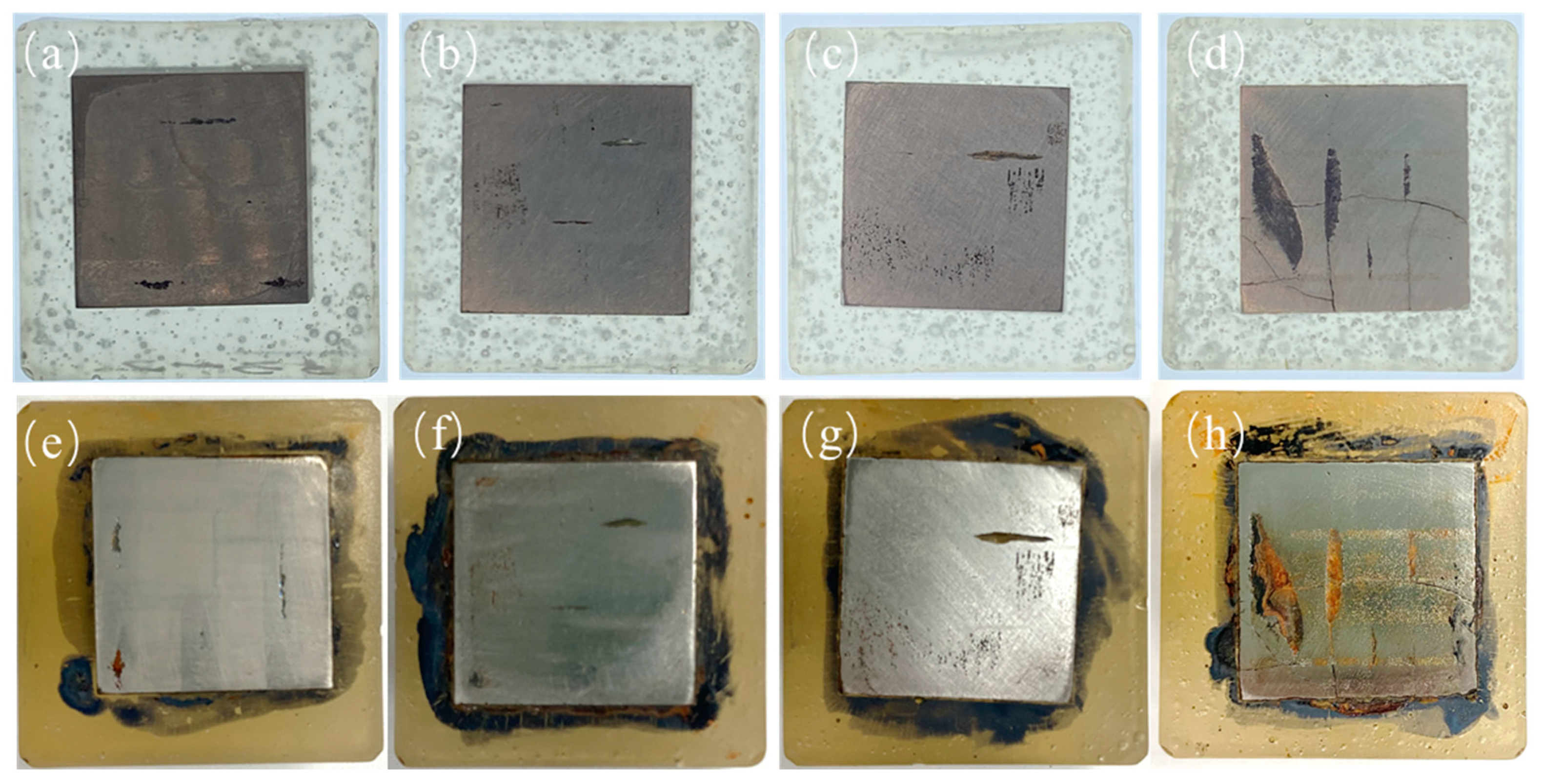

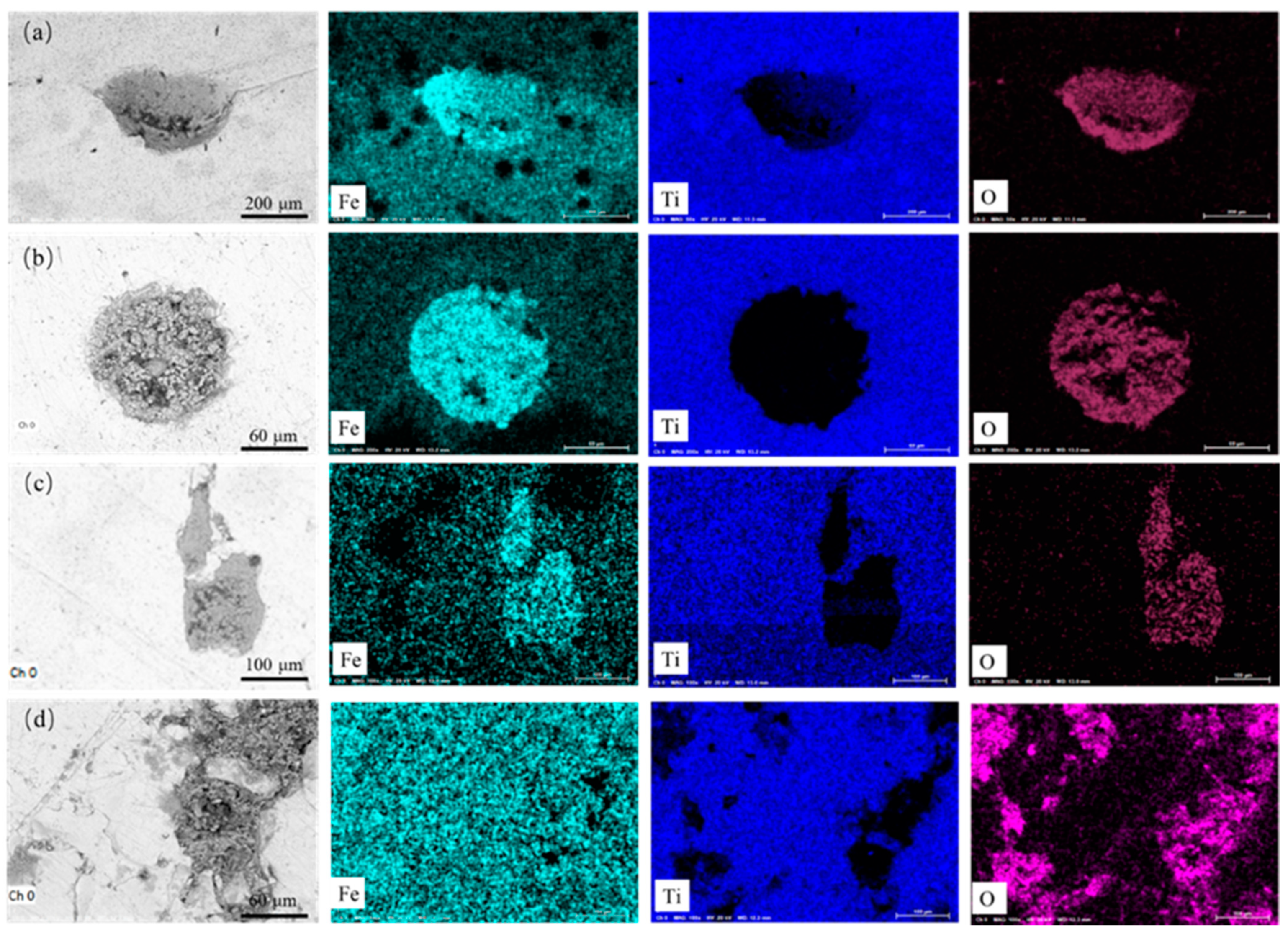
| Sample | Flow Rate (s/50 g) |
|---|---|
| 53–75 μm spherical Ti powder | 27.3 |
| 75–150 μm spherical Ti powder | 26.5 |
| 150–200 μm spherical Ti powder | 28.5 |
| 50–150 μm irregular shape Ti powder | 43.7 |
| Sample | Ti (%) | Fe (%) |
|---|---|---|
| Ti-S | 84.03 | 15.97 |
| Ti-M | 82.34 | 17.66 |
| Ti-L | 79.07 | 20.93 |
| Ti-I | 55.49 | 44.51 |
| Sample | Ecorr (V) | Icorr (A/cm2) |
|---|---|---|
| Ti-S | −0.2401 | 2.597 × 10−7 |
| Ti-M | −0.2206 | 6.220 × 10−8 |
| Ti-L | −0.2356 | 7.057 × 10−8 |
| Ti-I | −0.3951 | 4.363 × 10−6 |
| Q235 | −0.5797 | 1.472 × 10−6 |
| Ti | −0.2465 | 1.351 × 10−8 |
Publisher’s Note: MDPI stays neutral with regard to jurisdictional claims in published maps and institutional affiliations. |
© 2022 by the authors. Licensee MDPI, Basel, Switzerland. This article is an open access article distributed under the terms and conditions of the Creative Commons Attribution (CC BY) license (https://creativecommons.org/licenses/by/4.0/).
Share and Cite
Wang, S.; Gao, W.; Hu, K.; Li, Z.; He, W.; Yu, H.; Sun, D. Effect of Powder Particle Size and Shape on Appearance and Performance of Titanium Coatings Prepared on Mild Steel by Plasma Cladding. Coatings 2022, 12, 1149. https://doi.org/10.3390/coatings12081149
Wang S, Gao W, Hu K, Li Z, He W, Yu H, Sun D. Effect of Powder Particle Size and Shape on Appearance and Performance of Titanium Coatings Prepared on Mild Steel by Plasma Cladding. Coatings. 2022; 12(8):1149. https://doi.org/10.3390/coatings12081149
Chicago/Turabian StyleWang, Shicheng, Wei Gao, Kangkai Hu, Zhengyi Li, Weining He, Hongying Yu, and Dongbai Sun. 2022. "Effect of Powder Particle Size and Shape on Appearance and Performance of Titanium Coatings Prepared on Mild Steel by Plasma Cladding" Coatings 12, no. 8: 1149. https://doi.org/10.3390/coatings12081149
APA StyleWang, S., Gao, W., Hu, K., Li, Z., He, W., Yu, H., & Sun, D. (2022). Effect of Powder Particle Size and Shape on Appearance and Performance of Titanium Coatings Prepared on Mild Steel by Plasma Cladding. Coatings, 12(8), 1149. https://doi.org/10.3390/coatings12081149






